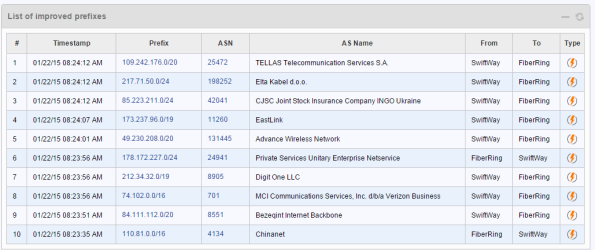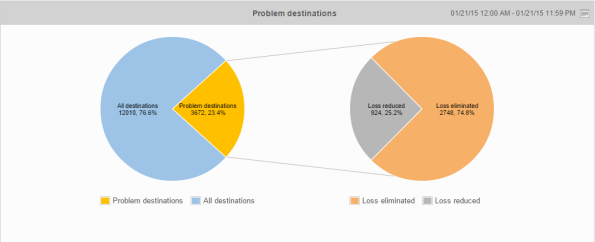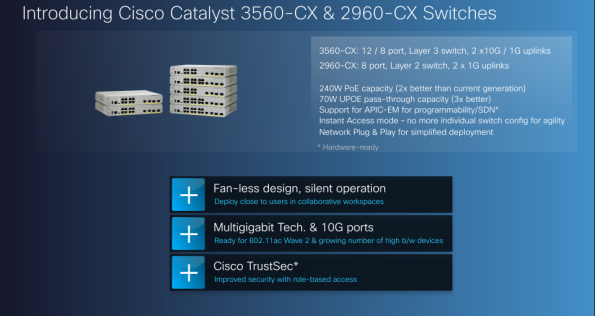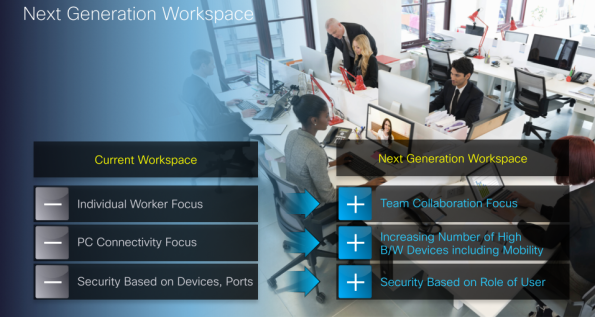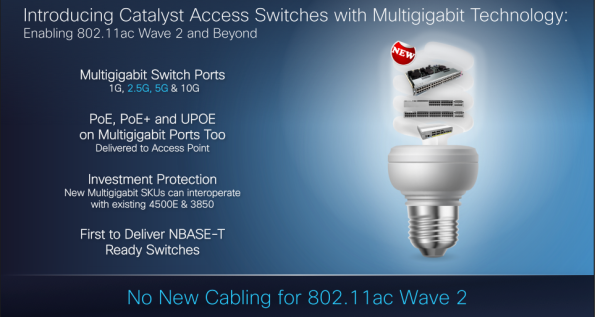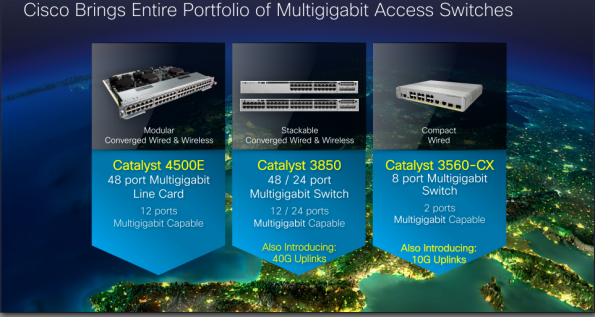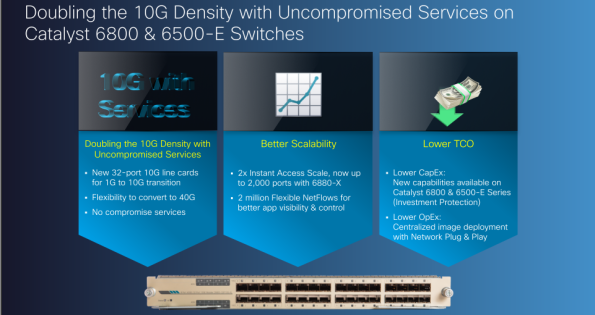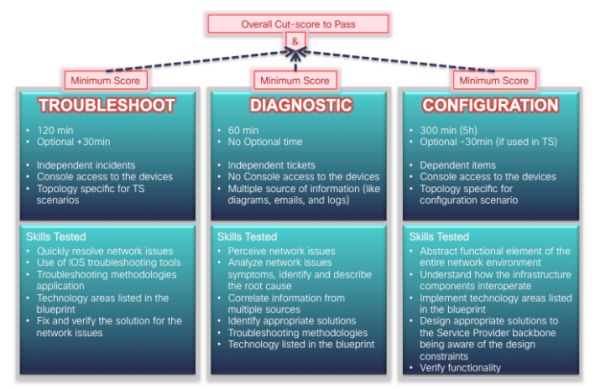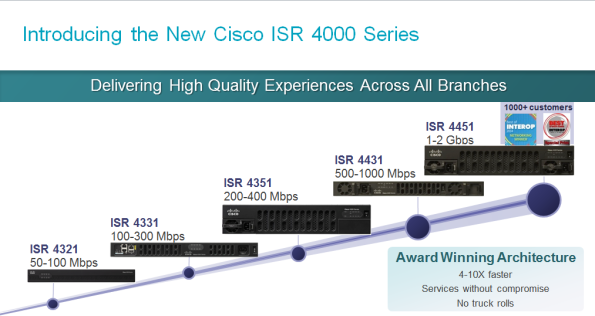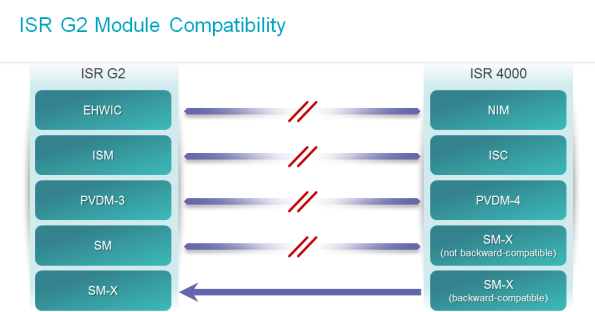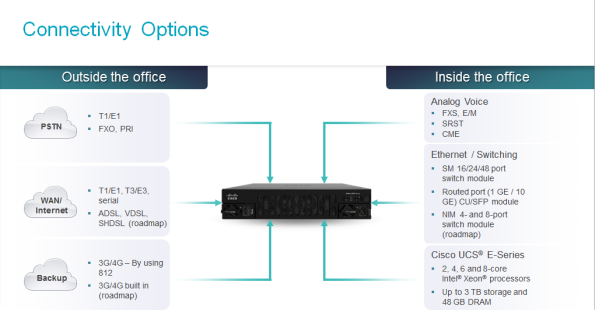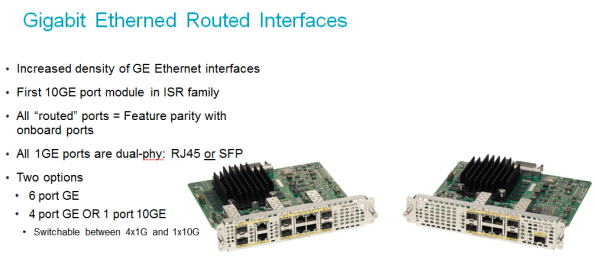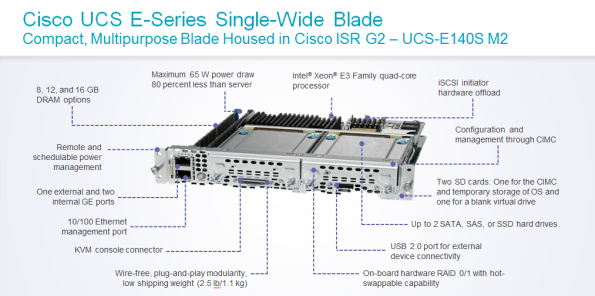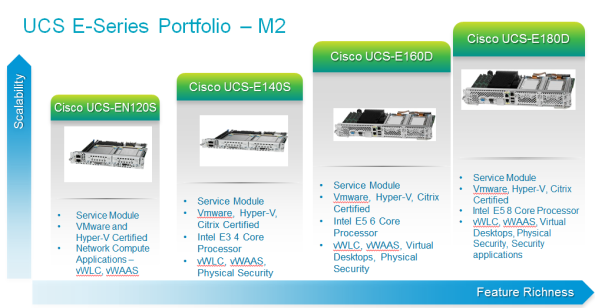Archive
CLUS Keynote Speaker – It’s a Dirty Job but Somebody’s Gotta Do It
Did you guess by the title who will be the celebrity keynote speaker for CLUS San Diego? It’s none other than Mike Rowe, also known as the dirtiest man on TV.
Mike is the man behind “Dirty Jobs” on the Discovery Channel. Little did he know when pitching the idea to Discovery that they would order 39 episodes of it. Mike traveled through 50 states and completed 300 different jobs going through swamps, sewers, oil derricks, lumberjack camps and what not.
Mike is also a narrator and can be heard in “American Chopper”, “American Hot Rod”, “Deadliest Catch”, “How the Universe Works” and other TV shows.
He is also a public speaker and often hired by Fortune 500 companies to tell their employees frightening stories of maggot farmers and sheep castrators.
Mike also believes in skilled trades and in working smart AND hard. He has written extensively on the country’s relationship with work and the skill gap.
I’m sure Mike’s speach will be very interesting…and maybe a bit gross…
The following two links take you to Cisco Live main page and the registration packages:
Network Design Webinar With Yours Truly at CLN
I’m hosting a network design webinar at the Cisco Learning Network on Feb 19th, 20.00 UTC+1.
As you may know, I am studying for the CCDE so I’m focusing on design right now but my other reason for hosting this is to remind people that with all the buzzwords around SDN and NfV going around, the networking fundamentals still hold true. TCP/IP is as important as ever, building a properly designed network is a must if you want to have overlays running on it. If you build a house and do a sloppy job with the foundation, what will happen? The same holds true in networking.
I will introduce the concepts of network design. What does a network designer do? What tools are used? What is CAPEX? What is OPEX? What certifications are available? What is important in network design? We will also look at a couple of design scenarios and reason about the impact of our choices. There is always a tradeoff!
If you are interested in network design or just want to tune in to yours truly, follow this link to CLN.
I hope to see you there!
Cisco Live in San Diego – Will You Make It?
“Make it” was one of the first singles released by the the band Aerosmith. Since then these guys have been rocking away for about 40 years. What does this have to do with Cisco Live? Aerosmith will be the band playing at the Customer Appreciation Event (CAE). A good time is pretty much guaranteed. Aerosmith knows how to entertain a crowd.
The CAE will take place at Petco Park, the home of the San Diego Padres. This photo shows the arena in the evening, looks quite spectacular to me.
Cisco Live is much more than just having fun though. If you want to make it in the IT industry, there is a lot to gain by going to Cisco Live. Here are some of my reason why I want to go:
- Stay on top of new technologies – Where is ACI going?
- Dip my toes into other technologies that I find interesting
- Gain deep level knowledge of platforms or features that will benefit me and my customers
- Go to sessions that will aid me on my certification path
- Connect with people!
- Learn a lot while having fun at the same time!
- Learn from the experience of others
When you are in the IT industry, there is a lot going on – always! It can be easier to focus on following industry trends while not having to check your phone or e-mail constantly. The keynotes are also great to hear what is coming and what the vision of the technology is.
At Cisco Live you will find deep dives into the architectures of platforms and how to troubleshoot platforms. As an example I have a few Catalyst 4500-x showing high CPU, how do you troubleshoot that? General troubleshooting is easy but how do you go beyond that? Cisco Live is perfect for that. If you’re lucky will even get to ask a few questions during or at the end of a session relating to your specific case. And the person answering will be a real expert and you might even get to have contact with that person after CLUS.
I’m moving towards the CCDE. When you go to CLUS, normally you get to take a free exam. If I haven’t taken the CCDE written by then, I might do it. More importantly, I will try to go to sessions that are design related and attend a techtorial or labtorial related to the CCDE, if I can.
One of the best things about going to CLUS is that you will meet a lot of people. Just hanging out and talking with these people is a great experience. I have gained a lot of friends and contacts which have proven to be very very valuable when I need to bounce some ideas or get some input into a project.
Going to Cisco Live is fun! It’s learning and relaxing at the same time! You have to go there to experience it.
If you are interested in going to Cisco Live, I am including some links. The first one is to the main page and the second one is for the registration packages.
Cisco Live
Cisco Live registration packages
I hope I’ll see you there!
Noction Intelligent Routing Platform (IRP) – What is it?
I was contacted by some people at Noction and asked if I was interested in writing about their platform, the Intelligent Routing Platform (IRP). Since it’s a product that uses Border Gateway Protocol (BGP), it peaked my interest. First let’s make the following things clear:
- I am not being paid to write this blog post
- My opinions can’t be bought
- I will only write about a product if it’s something that interests me
BGP is the glue of the Internet (with DNS) and what keeps everything running. BGP is a well designed and scalable protocol which has been around for a long time. It has grown from carrying a few hundred routes to half a million routes. However, there will always be use cases where BGP might not fit your business model.
In Noction’s white paper they define the following as the network’s major challenges:
- Meeting the customer’s demand for 100% uptime
- Facing the low latency requirement
- Achieving reliable data transmission
- Avoiding network congestion and blackouts
- Achieving consistency of throughput
- Keeping bandwidth usage below predefined commit levels
- Reducing the cost and time of network troubleshooting
The product is designed for multihomed networks running BGP. You can’t optimize network flows if you don’t have any other paths to switch to. Some of these challenges apply to all networks and some may be a bit more local. As an example, in Sweden (where I live), you usually pay a fixed amount for your bandwidth and you can use that all you want without going above some threshold defined by the Service Provider (SP).
So why do we have these challenges? Is it BGP’s fault? BGP has a lot of knobs but they are quite blunt tools. We need to keep in mind that BGP runs between organizations and every organization must make their own decisions on how to forward traffic. This means that there is no end to end policy to optimize the traffic flowing across these organizations.
If history has learned us anything, it is that protocols that try to keep too much state will eventually fail or hit scaling limitations. These protocols seem very intelligent and forward thinking at first but as soon as they hit large scale, the burden becomes too much. One such protcol is Resource Reservation Protocol (RSVP). BGP’s design is what has kept the Internet running for decades, this would not be the case if we were to inject all kind of metrics, latencies, jitter etc for all of the Network Layer Reachability Information (NLRI). As communities have grown more popular there could be a use case where information is tagged along as communities for the NLRI. The question is then, how often do we update the communities?
Does this mean that these are not real challenges or that there is no room for a product like Noction IRP? No, it means that unique forwarding decisions and intelligence needs to be kept at the edge of the network, not in the core. We should keep as little state as possible in the core for networks that need high availability.
How does BGP select which routes are the best? The default is to simply look at the AS-path:, the shorter AS-path, the better. Meaning that the traffic will pass through as few organizations as possible. This does not however give any consideration to how much bandwidth is available, nor takes into account latency and jitter of the path and the availability of the path.
How does this product work? The following picture shows the key components of IRP:
There is a collector that passively analyzes the traffic flowing to see which prefixes are being used the most, between which endpoints is the traffic flowing and so on. The collector can gather this data from a mirror port or preferably from Netflow/sFlow.
The Explorer will actively probe relevant prefixes for metrics such as latency, jitter and packet loss. This data is then sent to the Core.
The Core is based on the data received from the Explorer calculating improvements to optimize metrics such as latency, jitter and packet loss or the most cost effective path. These improvements are sent to the BGP daemon which will advertise BGP Updates to the edge router(s).
IRP is non-intrusive and does not sit in the data path. If IRP were to fail, traffic would fall back to their normal paths following the shortest AS-path or any other policies defined on the edge router. IRP can also act in BGP non-intrusive mode where it will report potential improvements without applying them.
If we pause here for a second, this sounds a lot like Performance Routing (PfR), doesn’t it? So what value would IRP add that PfR does not? I see mainly two benefits here. PfR may require a more senior network administrator to setup and administer, however PfR has been greatly simplified in later releases. The other main factor is the reporting through the frontend. PfR does not give you the monitoring platform, which is not to be expected of course.
When you login to the IRP you get a dashboard showing the status of the system and the number of prefixes being probed and how many of those prefixes are being improved.
In the demo, there are two service providers called “SwiftWay” and “FiberRing”. There is a graph to show how many prefixes have been rerouted to one of the providers.
There is also a list that shows you which prefixes were moved, what’s the AS number and the reason for being moved. If you do a mouseover on the flash symbol, it will show if the improvement was due to loss or latency.
There are a lot of different reports that can be generated. A nice feature is that all reports are exportable to CSV, XLS or PDF.
This report shows how loss has been improved: 75% of loss was totally avoided and 25% of loss was reduced.
There are also graphs showing top usage of traffic by AS or, as in this case, the bandwidth used per provider.
The monitoring and reports are extensive and easy to use. The IRP is certainly an interesting platform and depending on the business case it could be very useful. The main considerations would be how sensitive are you to loss and latency? How much does it cost you if you are not choosing the most optimal path? Do you trust a system to make these decisions for you? If you do, then certainly take a look at the Noction IRP.
Cisco Reveals New Products – The Time of Multigigabit is Here
Wireless networks are becoming faster and faster. With 802.11ac Wave 2, wireless networks will be capable of achieving speeds up to 6.8 Gbps. This creates challenges when connecting APs to switches which normally run Ethernet at 1GE or 10GE. To meet these evolving demands, Cisco has as of today revealed some new products.
Cisco is releasing a new compact switch supporting multigigabit technology, the Cisco Catalyst 3560-CX. The most compelling new features are support for multigigabit interfaces, more power available for PoE, support for 10GE on the uplinks and being able to be deployed as an Instant Access switch. It also support PoE pass through which can help save on long cable runs. The Catalyst 3560-CX supports two multigigabit interfaces.
This device is fanless, so it can be deployed in cubicles to decrease the need for a wiring closet. It also has the support for role based security. Cisco’s goal is to provide for a better working environment, which they call “Next Generation Workspace”.
If you are a technical person, you are probably wonder about the multigigabit ports. IEEE only has 1GE, 10GE and so on. Cisco started the NBASE-T Alliance with Aquantia, Freescale, and Xilinx. Other members have joined since. They are also working with the IEEE to make these multigigabit Ethernet technology a standard.
With 802.11ac Wave 2 comes the possibility for having multiple conversations at the same time. Basically taking wireless technology from being a hub to a switch.
This then creates challenges with Cat5e cables being limited to 1 Gbps and the support for PoE on multigigabit interfaces.
The new rates for multigigabit ports will be 2.5 Gbps and 5 Gbps and PoE are also supported on these ports.
There is also a new line card for the Catalyst 4500E with 48 ports where 12 of the ports are multigigabit capable. Then there’s also a new version of the Catalyst 3850 in either 24 or 48 port models where half of the ports support multigigabit, so either 12 or 24 ports will be multigigabit capable. The Catalyst 3850 will also support 40GE uplinks which is another nice addition.
The new Catalyst 3850 is compatible with the older model so you can stack them together if you want to.
To support the increase of traffic in the backbone, there is a new line card for the Catalyst 6800 and Catalyst 6500-E switches which supports 32 ports of 10GE, there is also the possibility of converting ports to 40GE.
Cisco has also increase the scale of Instant Access from around 1000 ports to 2000 ports. The scalability was a bit limited earlier for larger networks so this is a welcomed increase.
Wired and wireless networks are converging. To support this there is a need for interfaces capable of more than 1GE. Cisco is now preparing for the next wave of 802.11ac and more of their products are getting support for Instant Access. This will speed up the convergence of wired and wireless networks and make it easier for network administrators to manage their network. Follow this link to find out more on multigigabit.
Book Review – End-to-End QoS Network Design: Quality of Service for Rich-Media & Cloud Networks, Second Edition
As part of my CCDE studies, I needed a good resource on QoS. There have basically been two good books on QoS before, the first edition of End to End Qos Network Design and Qos-Enabled Networks: Tools and Foundations. The first edition of this book is good but very dated, it was released back in 2004. Qos-Enabled Networks is a great book but it’s written to not be vendor specific, so you will not get details on platforms or configuration snippets.
In my opinion, earlier books gave a good foundation to understand QoS concepts but there were too few design cases, they were lacking platform information and not enough examples to be able to act as a reference. Since the first edition of this book, a lot has happened, new products and new Places In the Network (PIN) such as Datacenter, Wireless and to some degree MPLS.
The book is written by Tim Szigeti, Christina Hattingh, Robert Barton and Kenneth Briley Jr. Tim is a long time CCIE, technical leader at Cisco. He is the QoS gury responsible for a lot of the Cisco Validated Designs (CVDs) and a frequent presenter at Cisco Live. Christina is a former Technical Marketing Engineer (TME) at Cisco now acting as an independant, writing books, teaching and consulting. Robert is a senior Systems Engineer (SE), dual CCIE and CCDE. Kenneth is a CCIE, technical lead at Cisco, focusing on convergence of QoS for wired and wireless networks.
This book was written of some of the best minds in the world on QoS, and it shows.
The book is divided into different parts, the first part consists of an QoS overview and describes Diffserv, Intserv, classification and marking, policing, shaping, congestion management and avoidance, QoS in IPv6 networks and more. The book does a very good job of laying a good foundation for the reader to build on. It has nice graphics to explain queueing, policing, shaping and so on. Every chapter also has a “Further Reading” part if you want to dive deeper into a subject.
The next part of the book is about business and application QoS requirements. What requirements does different applications have? How do you differentiate business critical apps on port 80 from bulk traffic? What are the design principles for QoS? How many classes should be deployed? The book tries to answer these questions, many books fall short on this part.
After that there is a part on Campus QoS. This is where the book really starts to shine. It shows the difference between Multi Layer Switching (MLS) QoS and Modular QoS CLI (MQC), how to apply QoS on 3750, 4500 and 6500. What are the different trust states, where should you trust, where should you mark. It also shows how to apply QoS on Etherchannels and how it behaves on different platforms, information that can be difficult to find and hidden through multiple documents otherwise. It ends with a design case and in my opinion all books should be written like this. This shows the reader how to apply the different concepts and to think of how all pieces fit together.
Then there is a part on wireless QoS, first an overview on how packets are scheduled on the radio, which standards that are relevant, why the earlier standards were not good enough and what has changed. QoS is shown on different platforms and controllers and at the end there is a case study. I don’t work much with wireless but if I did this would be a very good reference since earlier books don’t discuss wireless QoS. I was surprised to learn that there are some discrepancies in wireless QoS compared to 802.1p and DSCP.
Datacenter QoS is in the next part and this is definitely a great addition compared to earlier books. It discusses the different Nexus platforms, what additions are needed in the Datacenter to be able to deliver lossless Ethernet and also ends with a case study.
WAN and branch QoS design comes after that and this is probably what most readers will recognize as QoS. It has examples on the ISR G2 but also on the ASR1k and as usual ends with a case study.
I really like the next part which is on MPLS QoS. This is not easy to find in other books. It explains the difference between short pipe, pipe and uniform mode. It also has examples on QoS on the ASR9k, CRS and also examples on how the customer should configure QoS when connecting to a Service Provider (SP). As usual a case study at the end.
The final part of the book is on QoS in VPNs, such as IPSEC, GET VPN, DMVPN and connecting from a home office. This part is also difficult to find in other books so it’s great that it’s included in here. It also has a case study at the end.
This book is written on some of the best people out there. It has a nice flow to it, it covers all the relevant areas of QoS. It covers different platforms and shows examples on how to configure QoS on these platforms. It can serve as book for learning more or for a certification or simply as a reference for all of your needs on QoS. This book is VERY extensive but it is so for a reason. It’s not long just for the sake of it, it’s all relevant material. Read it end to end or pick the parts you are interested in. If you want to get one book for QoS, get this one! If you are studying for the CCIE, this should be your reference. I can’t recommend this book enough, you’ll see the ratings on Amazon, Safari etc that everyone agrees that this is an awesome book.
CCIE SP version 4 has been announced
Cisco has been updating their certifications lately. The CCIE RS got bumped to version 5 and went all virtual. The CCNP RS was then also updated and now it’s time for the CCIE SP.
It seems that Cisco has done a better job lately of tying all the certifications together and providing a more unified exam format. At least this is the indications I’m getting for the CCIE track.
CCIE SP v4 will use the same exam format as the CCIE RS v5. This means that there will be a diagnostic (DIAG) and troubleshooting (TS) module at the CCIE SP lab. First let’s go over the exam domain.
My impression from this is that the v4 blueprint is a bit more generic. This makes it easier to develop the exam content and I also get the feeling that it’s getting more important to have a high level understanding of the different technologies and architecture.
The exam is designed to be dual stack, so you can’t afford to be weak on v6, you must master the v6 topics at the same level as v4. If you get certified you may use the IPv6 Forum Gold logo.
The following topics have been added to version SPv4 written:
• SP architecture concepts
• Virtualization concepts
• Mobility concepts
• Describe BGP path attributes
• Describe MPLS forwarding and control plane mechanisms
• Describe MPLS TE attributes
• Describe MPLS advanced features, for example, segment routing, G-MPLS, MPLS-TP, and MPLS TE Inter-AS
• Describe multicast P2MP TE
• Describe EVPN (EVPN-VPWS and PBB EVPN)
• Describe IEEE 802.1ad (Q-in-Q), IEEE 802.1ah (Mac-in-Mac), and ITU G.8032 (REP)
• Describe broadband forum TR-101, for example, trunk N:1 and trunk 1:1
• Describe QoS link fragmentation (LFI), cRTP, and RTP
• Describe multichassis/clustering high availability
• Describe Layer 1 failure detection
• Describe BGPsec
• Describe backscatter traceback
• Describe lawful-intercept
• Describe BGP Flowspec
• Describe DDoS mitigation techniques
• Describe network event and fault management
• Describe performance management and capacity procedures
• Describe maintenance and operational procedures
• Describe the network inventory management process
• Describe network change, implementation, and rollback
• Describe the incident management process based on the ITILv3 framework
There are some interesting topics here and it’s clear that the exam has been modernized. Virtualization is added which may relate to Network Function Virtualization (NFV) which is one of the buzzwords right now.
The MPLS focus is even stronger, many SPs have started or are in the process of starting with deploying MPLS to the access layer. Because these networks are so large and using the same IGP in the entire domain won’t scale, there are now solutions like seamless MPLS which uses BGP to carry link state information. They have also added P2MP LSPs which are used to transport multicast over MPLS.
Another interesting topic is segment routing which just came out in 5.2.0. With segment routing it’s possible to setup the path the traffic should take by labeling the packets. The labels are not derived from LDP. The labels are instead carried in the IGP, such as ISIS.
EVPN and PBB-EVPN are technologies that will likely replace VPLS in the future, maybe not in all deployments but in many. It has features to make multihoming and loop prevention easier, which is always a challenge when a customer is multihomed at layer 2.
DoS and DDoS is the reality of every major SP today. We can see this in the exam topics as well, BGP Flowspec has been added which is a new feature in 5.2.0 to be able to deploy ACLs and ratelimiters through the use of BGP.
The following topics have been added to both the lab and the written:
• Describe, implement, and troubleshoot advanced BGP features, for example, add-path and BGP LS
• Describe, implement, and troubleshoot mLDP (including mLDP profiles from 0 to 9)
• Describe and optimize multicast scale and performance
• Describe, implement, and troubleshoot MPLS QoS models (MAM, RDM, pipe, short pipe, and uniform)
• Describe, implement, and troubleshoot MPLS TE QoS mechanisms (CBTS, PBTS, and DS-TE)
• Describe, implement, and troubleshoot E-LAN and E-TREE, for example, VPLS and H-VPLS
• Describe, implement, and troubleshoot Unified MPLS and CSC
• Describe, implement, and troubleshoot LISP
• Describe, implement, and troubleshoot GRE- and mGRE-based VPN
• Describe, implement, and troubleshoot IPv6 transition mechanism, for example, NAT44, NAT64, 6RD, and
DS lite
• Describe, implement, and troubleshoot end-to-end fast convergence
• Describe, implement, and troubleshoot multi-VRF CE
• Describe, implement, and troubleshoot Layer 2 failure detection
• Describe, implement, and troubleshoot Layer 3 failure detection
• Describe, implement, and troubleshoot control plane protection techniques (LPTS and CoPP)
• Describe, implement, and troubleshoot logging and SNMP security
• Describe, implement, and troubleshoot timing, for example, NTP, 1588v2, and SyncE
• Describe, implement, and troubleshoot SNMP traps, RMON, EEM, and EPC
• Describe, implement, and troubleshoot port mirroring protocols, for example, SPAN, RSPAN, and ERSPAN
• Describe, implement, and troubleshoot NetFlow and IPFIX
• Describe, implement, and troubleshoot IP SLA
• Describe, implement, and troubleshoot MPLS OAM and Ethernet OAM
Add path is important to provide redundancy in RR deployments.
BGP-LS is used for seamless MPLS.
MLDP is used for transporting multicast over MPLS.
There are different VPN technologies as expected and there is also a strong focus on security, how to defend the control plane of your routers and to mitigate DDoS.
QoS is always important and also relates a bit to the above topic.
IPv6 transition will be come more and more important as v4 addresses are now a scarce resource.
Monitoring becomes more important as well and topics like MPLS OAM and Ethernet OAM are therefore added.
The following topics have been removed from the CCIE SP v4 lab:
• Describe, implement, optimize, and troubleshoot packet over SONET
• Describe, implement, optimize, and troubleshoot IP over DWDM
• Describe, implement, optimize, and troubleshoot SP high-end products
• Describe, implement, optimize, and troubleshoot SONET/SDH connections
• Describe, implement, optimize, and troubleshoot T1/T3 and E1/E3 connections
• Describe, implement, optimize, and troubleshoot IP over DSL to the customer
• Describe, implement, optimize, and troubleshoot IP over wire line to the customer
• Describe, implement, optimize, and troubleshoot IP over cable to the customer
Technologies like SONET, E1/T1 are definitely on their way out. There is still a lot of DSL deployed but the future access technologies will likely be more focused on fibre and Ethernet.
These topics are removed from the v4 written:
• Describe, implement, optimize, and troubleshoot Frame Relay connections
• Describe, implement, optimize, and troubleshoot ATM connections
• Entire domain: describe, implement, optimize, and troubleshoot managed service traversing the core
• Entire domain: describe service provider network implementing principles
Frame relay and ATM should be pretty non existant now except for some areas of the world. It’s time to move on.
The exam number for the has changed from 350-029 to 400-201, the written format will still be very similar but the lab has changed a lot. The lab now consists of the following sections:
- Troubleshoot
- Diagnostic
- Configuration
This is the same format as the CCIE RS v5. The day starts with TS which is alotted 2 hours. You can spend an extra 30 minutes on the TS which is deducted from the Configuration section if you wish to.
I won’t describe more of the format here. I will include links for more information at the end.
The important part is that there is a cut score per module and an overall passing score. The addition of the TS and diagnostic section makes sense. It’s desirable that candidates passing have experience and this usually shows more in these sections than in the configuration.
This picture sums up the different sections:
As mentioned earlier the entire lab has now been virtualized. The lab will be based on the following products and software versions:
• ASR 9000 Series running the Cisco IOS XR 5.2 release
• ASR 1000 Series running the Cisco IOS XE 3.13S.15.4(3)S release
• Cisco 7600 Series running the Cisco IOS 15.5(3)S release
• Cisco ME 3600 Series running the Cisco IOS 15.5(3)S release
What’s interesting here is that if Cisco is virtualizing the above platforms this should indicate that maybe there will be virtualized versions of these available in the future to buy or download.
There is already the CSR1000v which matches the ASR 1000, the XRv matches up with the ASR9k. So there must be images for Cisco 7600 and ME 3600 as well. Hopefully Cisco makes these available in some form in the future.
In this document, Cisco mentions that features from newer releases will not be tested and they provide more information on the equipment and what to replace it with if you don’t have a 7600 or ASR 9000.
Here is the document describing topics added and removed.
Finally, here is the landing page for the new CCIE SP v4.
My first impression is positive. Cisco is working on making the lab environment more unified. They have added new topics to update the exam such as network virtualization, EVPN, segment routing, BGP Flowspec. They have also removed legacy topics such as ATM and Frame Relay.
CCIE exams are more relevant than ever and the death of the CCIE is greatly exaggerated.
Checking community interest for a new kind of networking site
A couple of days ago I got an idea for a new kind of networking site. The idea is to do something similar to dpreview.com but for network products.
I work a lot on network designs these days and part of the design is always what device to choose. Maybe I need a product that does NAT, IPSEC, 200 Mbit/s of throughput and has at least 4 ports. This is the kind of knowledge that you get from working on design and staying up to date with products from different vendors. There is not a community for people where they can find a broad range of products and get help choosing the right one based on different search criteria such as number of ports, features and the throughput.
What I would like to do as well is to have people write about the products. The product page said 200 Mbit/s but I got 500 Mbit/s with IMIX traffic. After enabling IPSEC I only got 80 Mbit/s. These kind of figures are very difficult to find. There could then be some kind of rating or voting system to rate if the post is helpful to sort out if people are posting misleading information.
I would also like to build a community where we exchange experiences on the products. Are the buffers too small? Can we alter QoS settings to help with the small buffers?
There would be a page linking to data sheets, presentations from conferences or other useful links on the products and also probably some kind of forums.
People could contribute with articles on Netflow, performance testing, how to setup a Netflow collector, how to use Spirent or other equivalent products. A lot of this relates to network performance but that would not be the only use for such a networking site.
I think we have a possibility to build something great but the problem is I have no experience with web design and to build an appropriate platform for this. I’m not sure what it could be based on? WordPress? Drupal? Wiki?
Either I need to find someone with web design and coding skills (and time) to help with this or try to crowd fund it in some way to pay a company to help with the design and development of the site.
Maybe I’m the only one wanting this? Maybe I’m crazy? 🙂 Please give me feedback if you want to see this happen and how you could contribute to it through either putting in your time and/or money into it.
Appreciate any feedback you guys have for me!
Cisco Adds New Routers In the ISR 4000 Family
The Cisco ISR G2 routers have been around for a while now. Roughly a year ago, Cisco released the Cisco 4451-X router which was the first ISR running IOS-XE. Cisco has now added new routers to the 4000 family, which means that the ISR G2 family will eventually go away. Don’t panic though! That will not happen for a while but if you are looking to buy new ISR routers, then take a look at the new 4000 family.
One great thing about the new ISR 4000 routers is that they support upgrading of the bandwidth capacity by buying a license. That means that you can keep the same router for a longer time and grow into it, rather than doing a complete replacement as your demand for bandwidth increases. The new models are ISR 4321, 4331, 4351 and 4431.
If you need a router that does 10 Mbit/s, then you can get the 4321 and you can keep using it until you reach 100 Mbit/s. The 4331 will get you from 100-300 Mbit/s which would cover a lot of customers that I currently have.
The next slide shows some of the new features of the ISR 4000: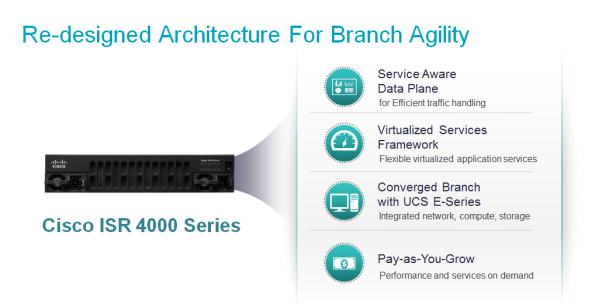
The ISR 4000 runs IOS-XE which means that IOSd is running on Linux kernel. There is also the possibility of running virtualized applications on this kernel which was not available on ISR G2 routers. You also have the possibility of adding UCS to make the offering more complete.
The migration path from ISR G2 to ISR 4000 is shown below. With the ISR 4000 they have tried to keep the units smaller in size so that the number of RU is less than with the ISR G2. This is welcomed if you have racks with little space in them.
The EHWIC of the ISR G2 has been replaced by Network Interface Modules (NIM). The NIM can also be used for service containers running applications on them. The Enhanced Service Module is compatible with the ISR G2, the NIM is not compatible with EHWIC.
The ISR 4000 uses multiple cores and as mentioned earlier the IOSd runs on a kernel. Other services such as WAAS can be hosted as well.
The next slide shows the packet flow of the ISR 4000.
The ISR 4000 now can run VMs. Apps like WAAS, Energywise and future apps can then be hosted on the ISR 4000.
With the ISR 4000, HDs can be added and these are hot swappable. Even SSD can be added which is always nice.
Most modules are not backwards compatible. It’s always a challenge to be backwards compatible and innovative at the same time.
The ISR 4000 has plenty of connectivity options to make it fit for many WAN scenarios. It has Ethernet, T1/E1, T3/E3, and 3G/4G on the roadmap.
Like the ISR G2, there is a switch module available and it has PoE if you have a need for that. It has an optional license to enable L3 features on the switch module.
Additional routed ports can be added and for the first time, ISR will support 10GE! You can switch between 4x 1GE or 1x 10GE from the software. All GE ports are dual phy which makes it easy to use both copper and fibre and to protect your investment.
Voice modules are available, I don’t know much about voice but every card will have its own DSP. No DSP on the motherboard!
UCS E-Series blade can be hosted. This makes the ISR 4000 attractive for branches where you can put a router and also host VMs to make it an all in one type of offering.
There is also a double wide blade that has room for more RAM and for more cores on the CPU.
The modules are also Vmware, Hyper-V and Citrix certified.
The ISR 4000 looks like a nice addition to the Cisco family. I personally like the pay as you grow feature and the addition of dual phy and 10GE ports. You can find more information about the ISR 4000 here.
400k Views in 4 Years – A Review of My Last 4 Years
Very often in our lives we are fully focused on what is going to happen in the
future. We rarely look back at what we have done and how we got to where we
are now. People that know me, know that I’m a very focused person that is always
looking to improve my skillset.
In July of 2010 I decided that I wanted to become a CCIE. I was a CCNP at that
time and I was working in a role where I did 2nd level support. I decided that
I wanted to blog to keep my notes for the CCIE online. I wrote my first blog
post on July 16, 2010. Today on August 16, 2014, almost four years later I passed
400k views on the blog. It’s been an amazing journey and here is a look back at
what has happened since then. This post is meant to be inspirational, to see
what can be accomplished in four years if you put your heart to it, please don’t
take it as boasting 🙂
For my CCIE studies I used INE workbooks, I decided that it would be good practice
to answer questions on their forums to keep all topics current. That led to
several awards as the top contributor, a few goodies and friends that I still
interact with.
In 2011 I changed jobs and became a senior network consultant.
I passed the lab in 2012, almost two years ago now. Passing the lab has been a great
boost for the career. I have noticed an increased respect and I usually get assignments
that are interesting and challenging.
After passing the lab I wanted to give back to the community. That led me to the
Cisco Learning Network. I try to help out in the forums and I have also been the instructor
for member led sessions where I have taught Spanning Tree and OSPF. I have been awarded
the technical excellence award and I am also now a Cisco Learning Network VIP.
This took me to my first Cisco Live, in San Francisco. Through CLN I’ve had the pleasure
of learning to know a lot of great people at Cisco.
I learned that there was a program called the Cisco Champions. This seemed interesting to
me and as I already was active in the networking community, I decided to apply.
I was happy to get accepted into the program and it has been great so far. I’ve met a lot
of interesting people and it took me to the first row of the keynotes of Cisco Live.
Not a bad place to be in 🙂
Today I’m still a senior network consultant, these days I’m working with network
design and as a subject matter expert for different customers. I am about to design and
implement a large network together with two of my colleagues based on ASR9k.
I want to thank all of my readers for sticking around and I hope you have had a
great four years as well.





